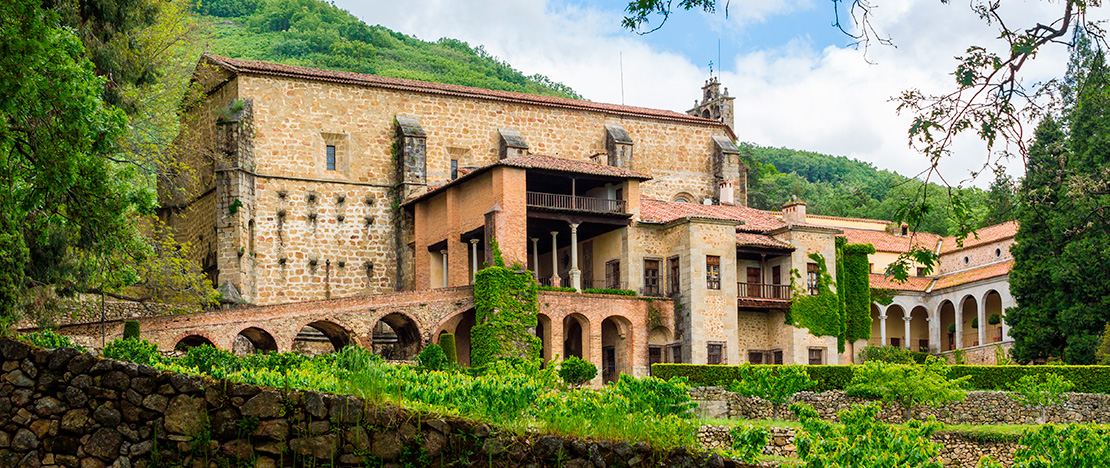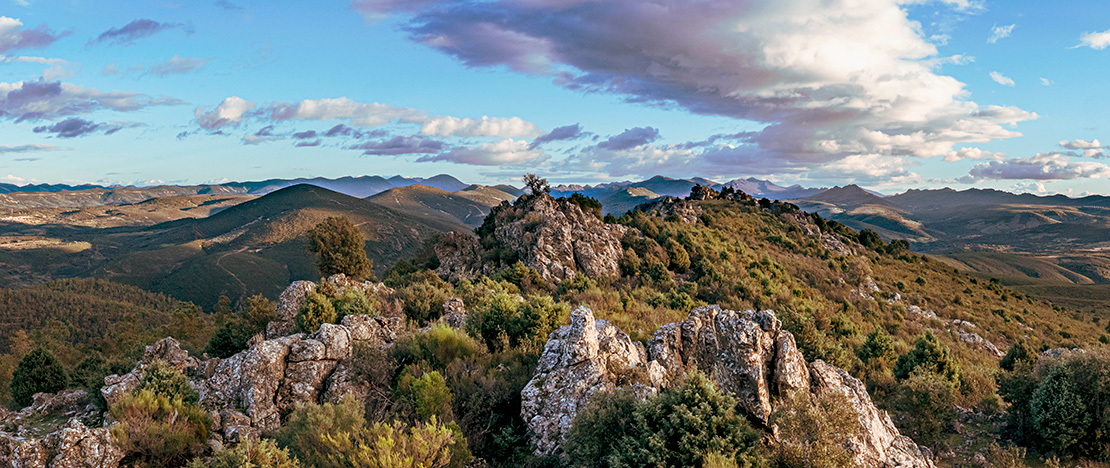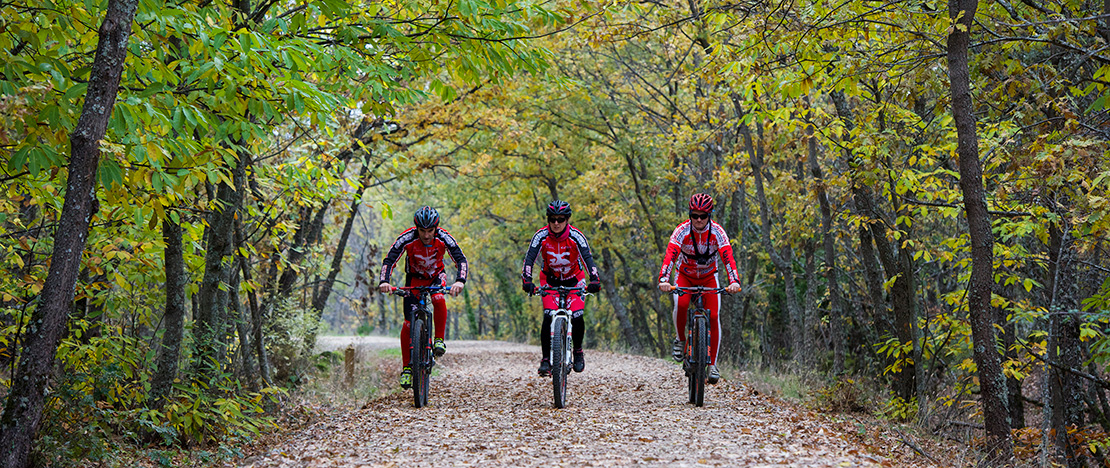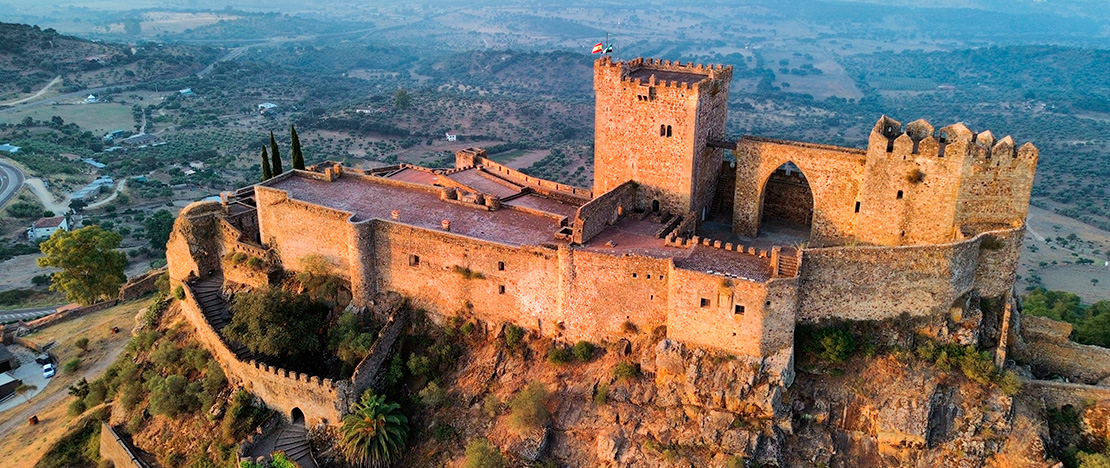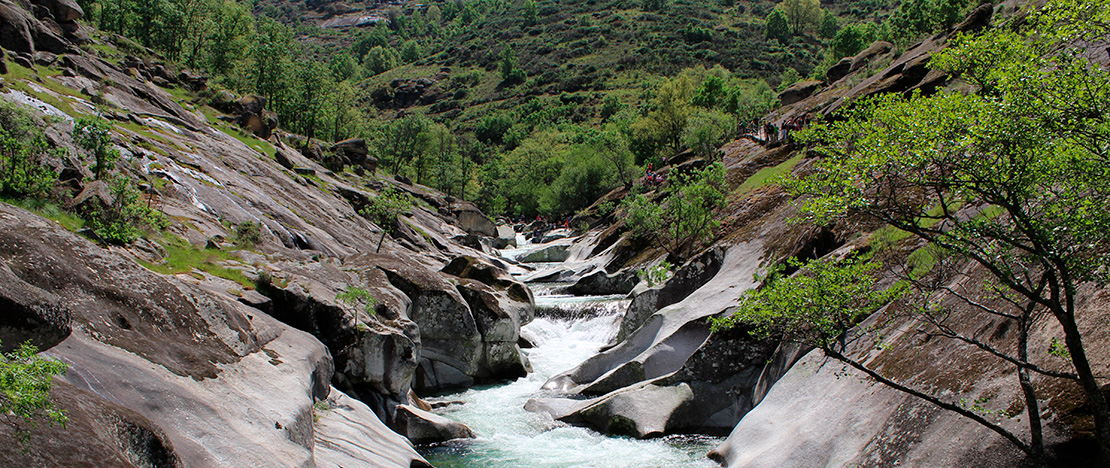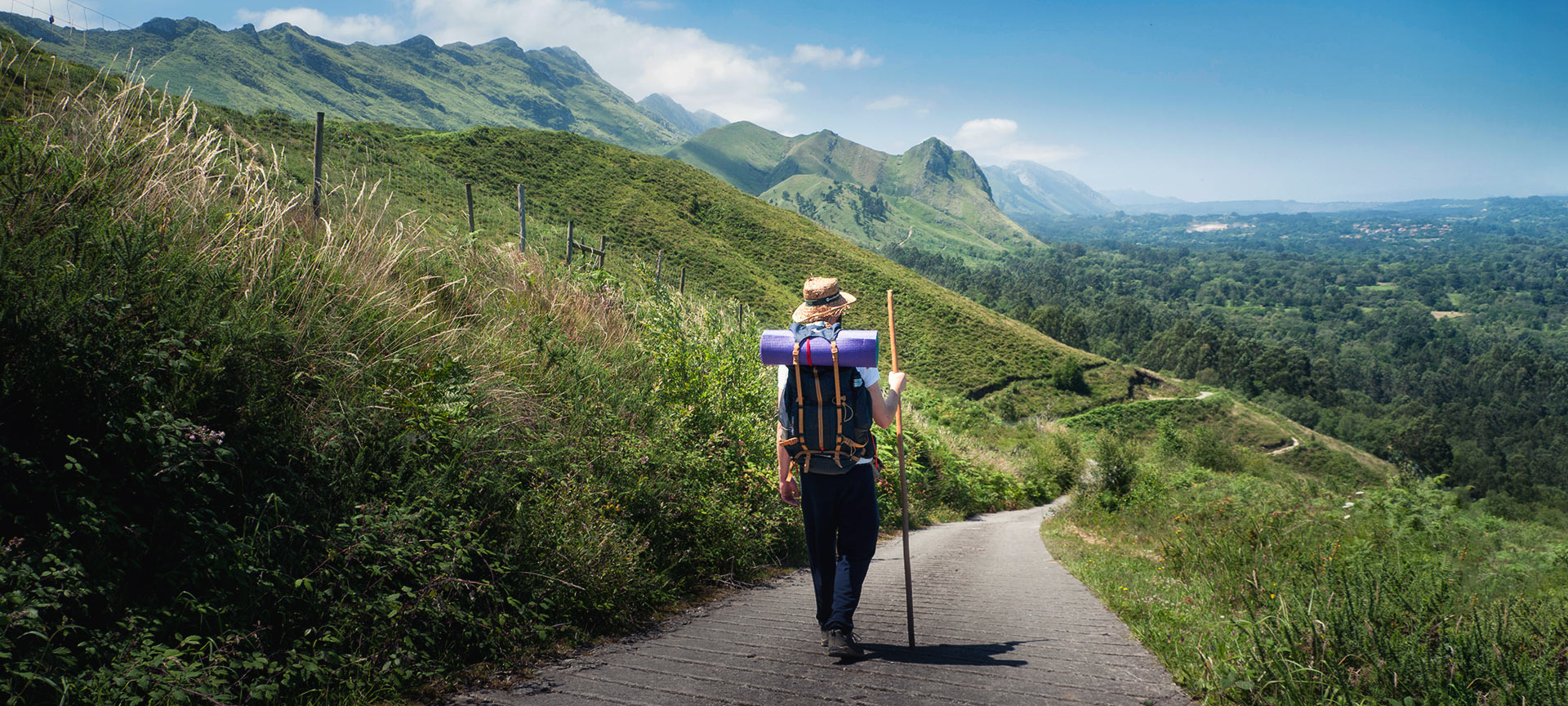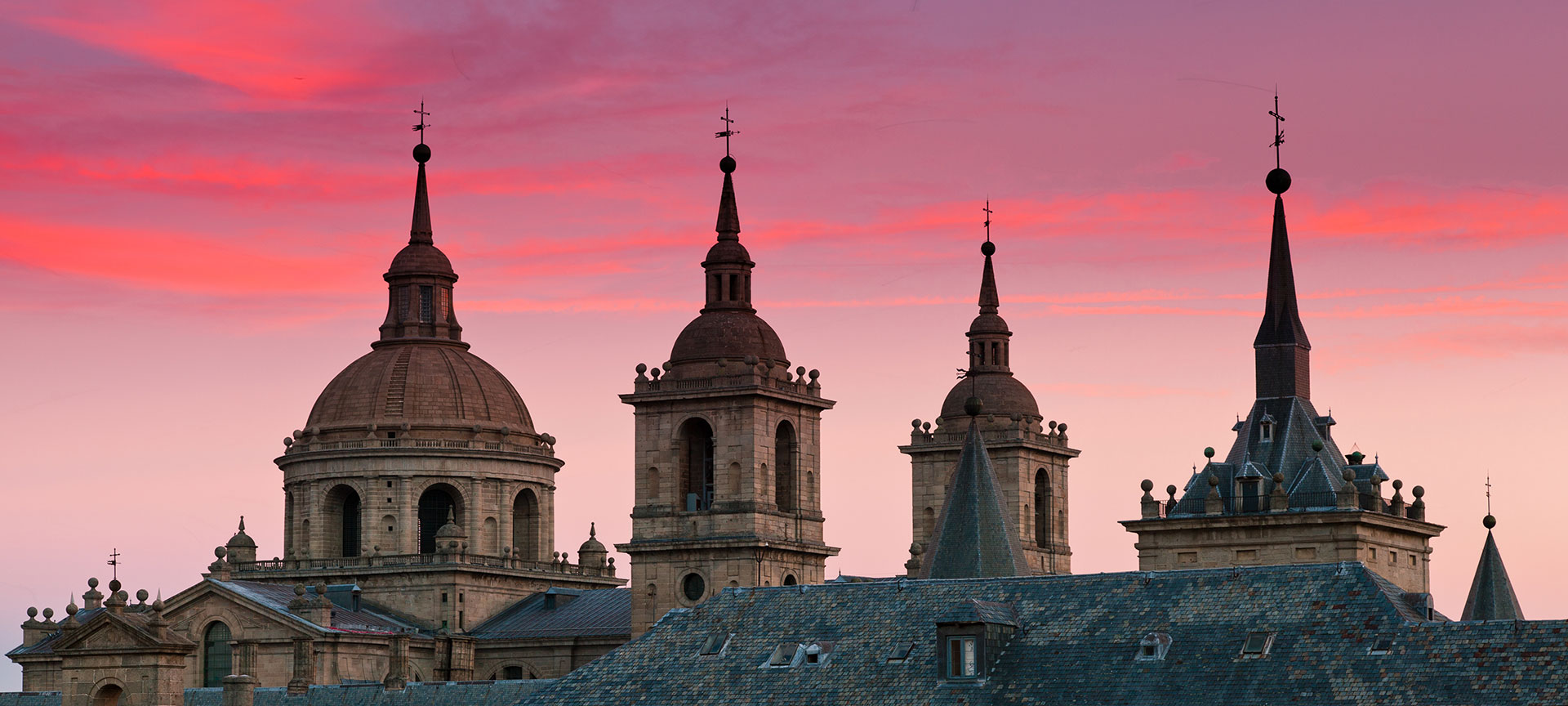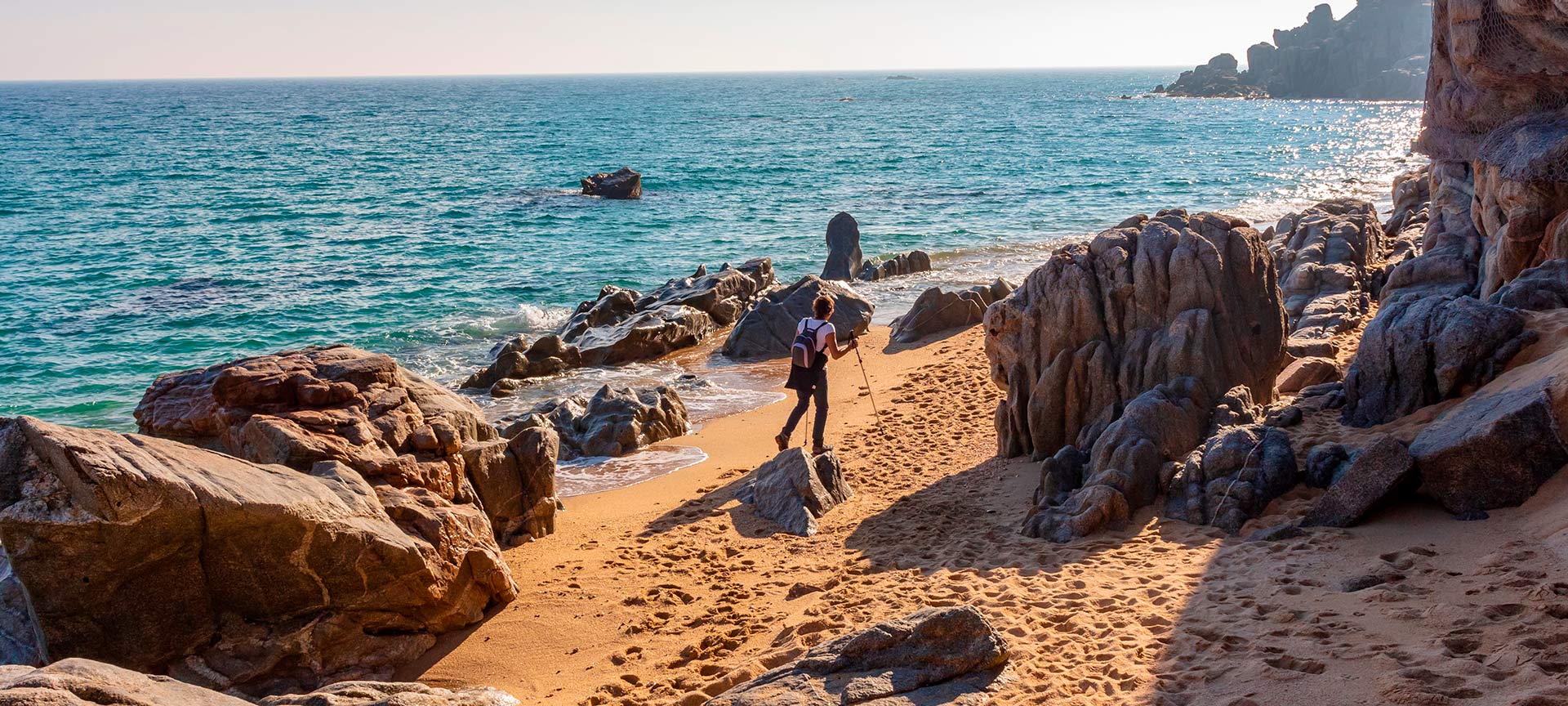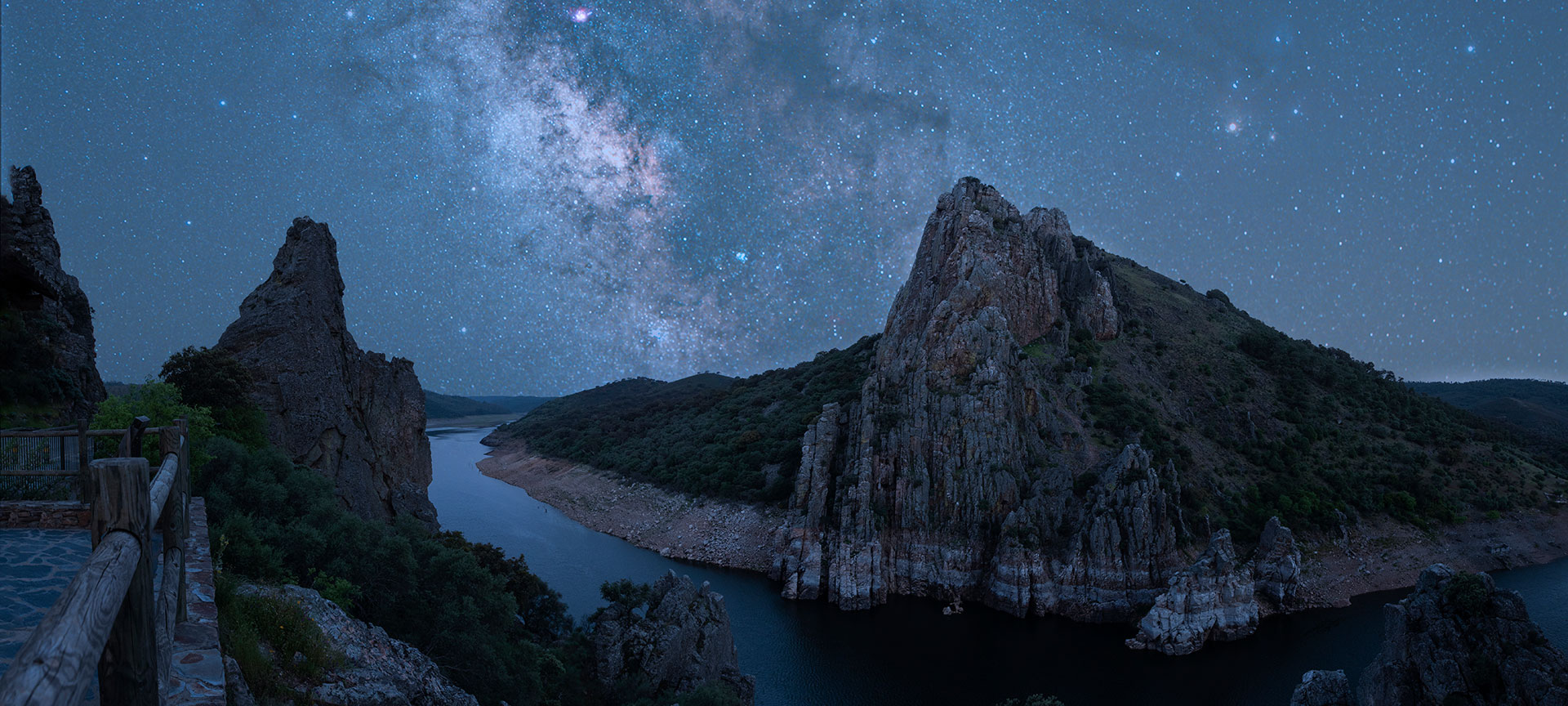
Are you looking for an inspiring destination where you can unwind and explore at your own pace? Here are six travel ideas for Extremadura. This region of Spain has one of the least light-polluted skies in Europe, making it an ideal place for astrotourism, birdwatching and other incredible activities such as exploring its extensive historical and natural heritage by motorbike, campervan or bicycle.
Debe activar Javascript para poder utilizar este servicio
-
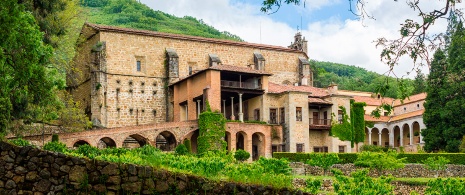
Scenic roads
If you like driving but want to get away from traffic jams and noisy city streets, how about checking out the motorcycle routes through Extremadura's countryside? On this network of scenic roads, whether on two wheels or by car, you have miles and miles to enjoy the scenery with hardly any traffic in sight.Have a look at some of the most stunning roads and decide which of Extremadura's scenic routes best suits your travel plans: the Ex-391 which runs from Cuacos de Yuste to the Monastery of Yuste; the Ex-208, 12 kilometres from Villarreal de San Carlos to Arroyo de la Vid, at the gates of Monfragüe National Park, a biosphere reserve; the Ex-303 which runs through the Sierra de San Pedro, some 30 kilometres between the villages of Aliseda and Arroyo del Soldado, near Alburquerque (Badajoz); the Ex-204, some 28 kilometres from Riomalo de Abajo to Pinofranqueado to discover one of the most photographed places in Las Hurdes, the meandering road of the Melero (Cáceres); the Ex-118, 29 kilometres from Guadalupe to Castañar de Ibor; the Ex-322, six kilometres from the island of La Serena reservoir to contemplate the water of the reservoirs or the Ex-103, with 29 kilometres of exceptional landscapes from Monesterio to Segura de León.
-
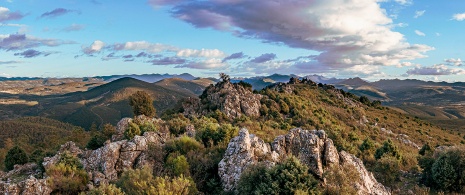
Amenities for campervans and vans
If you prefer to travel around Spain in a motorhome or campervan, you'll like to know that in Extremadura you can spend the night in more than 30 municipalities with service areas equipped with everything you need: connections for drinking water, electricity and drainage. The options are spread throughout the region, both close to the A-5 motorway, which crosses from east to west, and the A-66, from north to south, as well as on secondary roads and magnificent natural enclaves such as the Jerte Valley, La Vera, Sierra de Gata or the Villuercas-Ibores-Jara Geopark.You can visit villages that stand out for their heritage, such as Trujillo, Valencia de Alcántara, Zafra and Jerez de los Caballeros, and historic centres of cities like Badajoz and Plasencia or Cáceres and Mérida, both of which have been declared World Heritage Sites. As you can see, campervans in Extremadura are welcome!
-
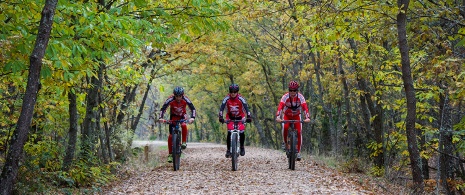
150 kilometres of greenways
Hiking and cycling enthusiasts will also find fantastic trails in Extremadura to explore its protected natural areas and cultural heritage. A good example is the greenways, former railway tracks converted into paths for hiking or cycling. The region has four greenways that total about 150 kilometres:Ruta de la Plata greenway (42 km): in the north of the province of Cáceres, it passes through towns in the Ambroz Valley such as Hervás, with one of the best-preserved Jewish quarters in Spain, and Baños de Montemayor, whose spa conserves the remains of Roman baths.Monfragüe greenway (20 km): apart from the livestock that graze freely in the pastures, you can sometimes see species such as the Iberian imperial eagle, griffon vulture, Egyptian vulture, peregrine falcon, sparrow hawk and eagle-owl.Las Vegas del Guadiana greenway (58 km): With several Special Protection Areas for Birds (ZEPAs) along the route, in winter you have the chance to see the largest wintering area of cranes that come from northern Europe.Mina La Jayona greenway (30 km): in the south of the province of Badajoz, the old iron mine where the route starts is today a place of great geological value, full of flora and fauna.
-
Astrotourism, three Starlight destinations and much more
It's no coincidence that Extremadura has exceptional spots where you can enjoy breathtaking starry skies. The Biosphere Reserve of Monfragüe, Alqueva and Las Hurdes are certified as Starlight tourist destinations. Other areas recommended for stargazing include: Sierra de Gata; Tajo Internacional y Sierra de San Pedro Biosphere Reserve; Tierras de Granadilla; Castro Capote (Higuera la Real); castles and pastures in the Sierra Suroeste of Badajoz; Villuercas-Ibores-Jara Geopark; Valle de Jerte and Valle de Ambroz.Plus, the “Extremadura buenas noches” initiative offers essential information on the network of stargazing viewpoints and night-time trails to help you choose the best routes and observation points, as well as a wide range of experiences that combine astrotourism activities in Extremadura with accommodation and gastronomy.
-
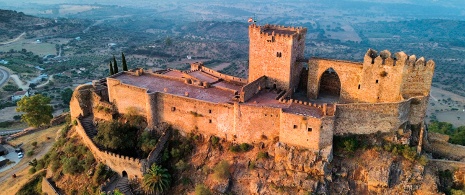
Architectural treasures to explore
A visit to Extremadura also offers the chance to explore lesser-known but highly valuable architectural remains. For example, if you take the road from Navalmoral de la Mata, in the north-east of the province of Cáceres, towards Plasencia, you will have the opportunity to discover some of these treasures. The most notable are: the ruins of Augustóbriga, with its Roman portico; the great fortress of the castle of Belvís de Monroy, a mixture of medieval, Renaissance, Gothic, Plateresque and Baroque styles; the Church of San Nicolás, with Romanesque and Gothic features, in Plasencia; or the Cristo de la Victoria, in Serradilla, whose monastery houses an important collection of paintings from the 16th and 17th centuries.Heading south towards the province of Badajoz, you will find the Plaza Mayor de Garrovillas, an example of rural architecture from the late Middle Ages that is considered one of the most beautiful in Spain; the imposing Conjunto Dolménico de Valencia de Alcántara, with prehistoric tombs from the 4th and 3rd millennium BC; and the Castillo de Luna, in Alburquerque, one of the best preserved medieval fortresses on the Iberian Peninsula.
-
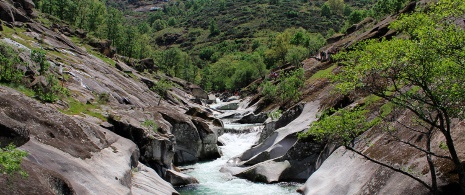
Landscapes straight out of a film
This Spanish region has more than enough qualities to make it a frequent backdrop for films and shows. In addition to its perfectly preserved monumental and natural heritage, with more than fifty sites with natural pools, such as the popular Pilones de la Garganta de los Infiernos, it also has a pleasant Mediterranean climate, with 3,000 hours of sunlight a year.Thus, Cáceres has hosted the filming of major productions such as Game of Thrones and The House of the Dragon, Still Star-Crossed or the Spanish Cathedral of the SeaIsabel or Inés of My Soul. Because of its Roman past, the city of Mérida was the setting for the feature film The Holy Innocents, by Mario Camus, and the British director Ridley Scott chose Trujillo to film 1492: Conquest of Paradise. Even Pedro Almodóvar, for the final scene of his film Tie Me Up! Tie Me Down!, starring Antonio Banderas, chose the walled town of Granadilla.
Travel plans for inspiring you

